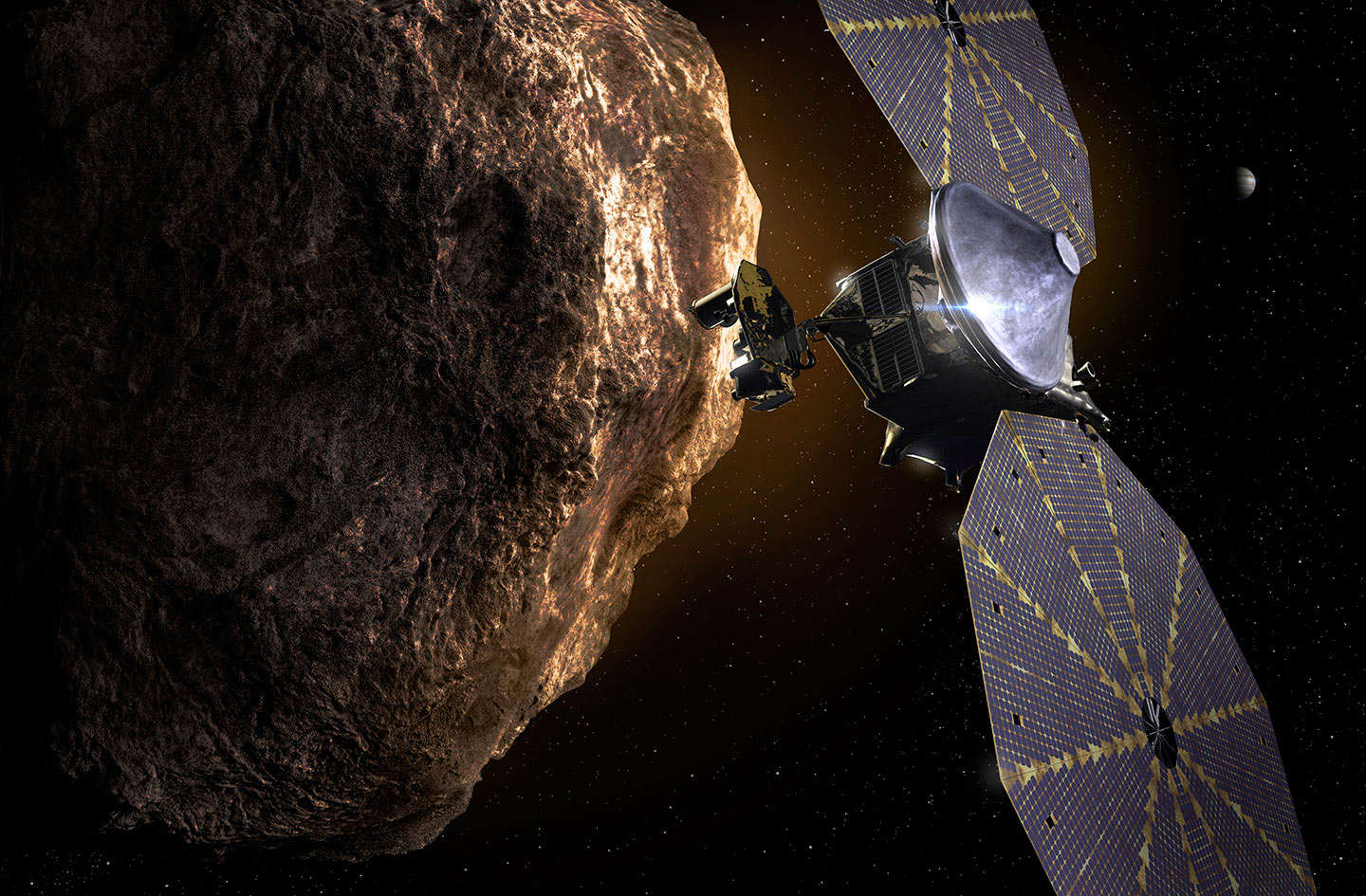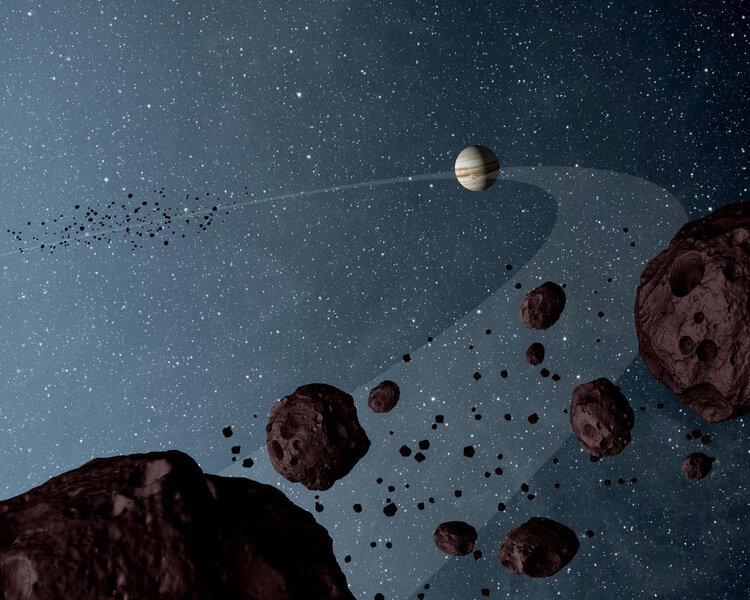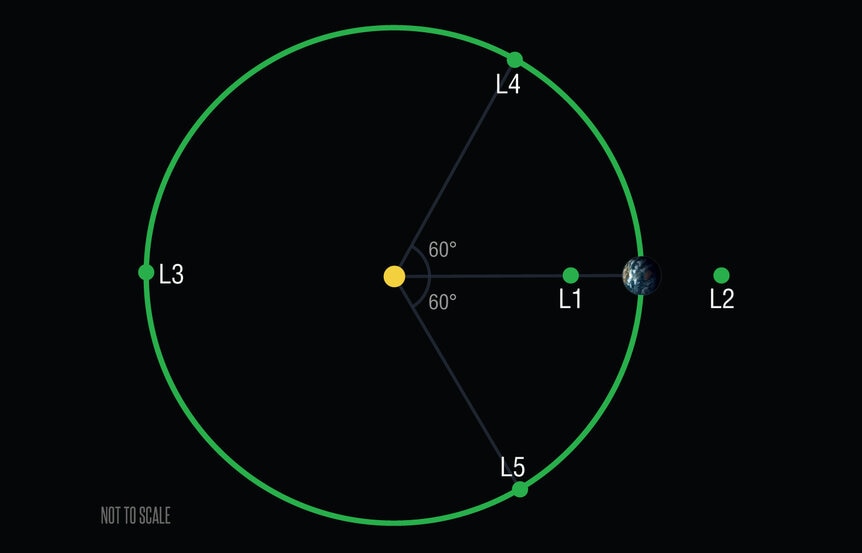Create a free profile to get unlimited access to exclusive videos, sweepstakes, and more!
Lucy's wild ride to Jupiter's orbit… but not to Jupiter

In a little less than a month, NASA will launch an ambitious mission through the asteroid belt and out to Jupiter’s orbit. The spacecraft won’t be visiting Jupiter, though: It will fly by several asteroids that share an orbit with the giant planet, looking to investigate these fossils from the solar system’s early days.
This mission is pretty cool, but the flight it’ll take to get where it’s going is just nuts.
This mission is called Lucy, named after the skeleton of Australopithecus afarensis, a hominin dating to over 3 million years ago, an early ancestor to humans. The skeleton itself was named after the Beatles song “Lucy in the sky with Diamonds”, making this circuitous naming path come full circle.
That’s a recurring theme with this mission, as you’ll see in a moment.
Lucy’s main mission is to visit what are called Jupiter’s Trojan asteroids and investigate them with a suite of scientific instruments. Due to a quirk of orbital physics, when something like a planet orbits a star there are several points along and near that orbit where there are gravitational stable spots; if you place a small object there it will orbit the star stably as well. These are called Lagrange points, and are pretty useful for space missions (James Webb Space Telescope, due to launch in December, will orbit around the Sun near one of Earth’s Lagrange points).
Jupiter is a big planet, with powerful gravity, so its Lagrange points are very stable. Asteroids that wander in there will tend to stay there. One of these points, called L4, is 60° ahead of Jupiter in its orbit, and another called L5 is 60° behind. A lot of asteroids cluster in those points — the first few discovered were named after figures in the myth of the Trojan War, so they’re nicknamed the Trojan asteroids, and these two stable spots in particular the Trojan points. By tradition the one in the L4 point are named after Greek figures from the war and those in L5 after Trojans*.
It’s suspected that many of these asteroids sharing Jupiter’s orbit have been there for a very long time, even as long as the formation of the solar system. Sending a mission there is a Very Good Idea: It can visit lots of these asteroids more easily, since they congregate together. It’s like having lots of space missions all rolled into one.
The Lucy mission is set to launch no earlier than October 16, 2021. It has a launch window of 23 days; any launch in that time range will do the trick. But it cannot launch before the window opens or after it closed, because the planets literally have to be aligned for this to work.
And this brings me to the wonderful thing that is Lucy’s trajectory.
Getting to Jupiter’s orbit is hard. It takes a lot of boosting to lift something that far from the Sun, and Lucy is a decently hefty spacecraft. It’s solar powered (which itself is cool; it’s only been recently that solar cells have become efficient enough to power a spacecraft that far from the Sun) and when deployed will be 14 meters wide and has a mass (including on-board fuel) of 1,550 kilograms.
That’s a lot of machine to throw to Jupiter. So orbital engineers decided to get a little help. And hey, once they had the help, why not add to the mission just a little bit and maybe get more science for free?
The final path chosen for Lucy is, simply, jaw-droppingly cool. Strap in for this… and take a look at the “Where is Lucy” website for a fantastic animation that shows you where it will be and when. It’ll really help you understand this next part.
It launches on an Atlas V rocket from Florida. It’ll go into a high loop around the Earth, then some months later drop back down toward our planet and use a gravity assist to boost it into an even higher loop that’ll take it out a bit past the orbit of Mars. Then it falls back to the Earth a second time to get another boost. This will fling it through the main asteroid belt where it has its first science encounter with a 4-km asteroid called Donaldjohanson (named after one of the co-discoverers of the Lucy skeleton!) on April 20, 2025.
Lucy (the spacecraft) will then continue through the asteroid belt on a curving ellipse that peaks right at the orbit of Jupiter, timed perfectly such that it encounters Jupiter’s L4 asteroids. It will pass very close to four of them: Eurybates (68 km wide and which has a tiny moon!), Polymele (21 km), Leucus (~35 km), and Orus (50 km).
Then it will drop back down through the asteroid belt and back to Earth’s orbit, swing around and head back out to Jupiter’s orbit again. Enough time will have passed that this time when it gets there it will encounter an asteroid in Jupiter’s L5 point. And get this: It’s a binary asteroid! The two components are called Patroclus and Menoetius, each roughly 100 km in diameter. They orbit around each other at a distance of roughly 700 km every 4 days or so. I imagine the images we get from that system on approach will be amazing.
I think the coolest part of all this is that this pattern then repeats every six years: Lucy will drop back toward Earth then head out to Jupiter’s orbit, cycling between the L5 and L4 asteroids every time. As long as the spacecraft is healthy and NASA gives the thumbs-up to continue the mission, it could do this for a long time.
This whole thing is a brilliant bit of orbital planning and I am mightily impressed by it. It uses a minimum of fuel and gets a tremendous amount of science out of it. And we don’t have to wait very long!
But first things first: Launch on October 16. This is one I’ll be eagerly watching.
*I learned something researching this: So many Trojan asteroids have been discovered — over ten thousand — that names ran out rapidly, so the International Astronomical Union (the official Keeper of Space Names) allowed naming them after Olympic athletes. That’s very cool.





























